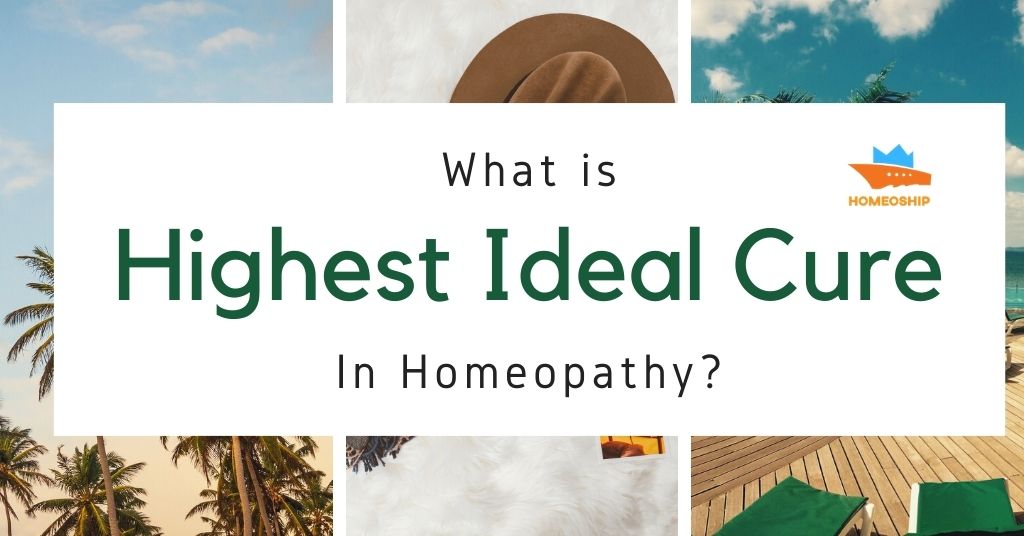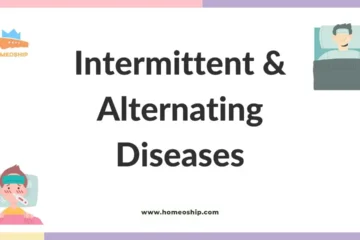Contents
Do you know there is a difference between a cure and the highest ideal cure, just establishing a cure and obtaining a healthy portrait is not the goal, it should be done by any means, and it should be followed by the second aphorism of the organon of medicine.
The highest ideal of cure is a rapid, gentle and permanent restoration of health or removal and annihilation of the disease to its whole extent in the shortest, most reliable, and the most harmless way, on easily comprehensible principles.
The idea of permanent restoration of health and not treating the merely temporary events of disease condition or subsequent appearance of the unhealthy state in newly altered form is already discussed in our ancient ayurvedic book i.e. Charaka Samhita.
According to this Ayurvedic medicine philosophy, at method of treatment that does not treat the existing disease symptoms, but gives rise to another set of symptoms is not a method of the ideal cure, whereas the method of removing the symptoms without creating any other symptoms, is the ideal cure.
A Greek physician, Asclepiades has also mentioned the same concept 2000 years before Dr. Hahnemann, but Master Hahnemann was the first one to put it into practice. This aphorism describes how an ideal cure should take place.

A cure must be Rapid
The disease is suffering and when a person is sick, he is suffering from discomfort, distress & agony. As the suffering of an individual is increased, there are more chances of tissue damages and might be chances of any major pathological changes which can’t be cure afterward and the disease becomes incurable. Therefore our main aim is to relieve the patient from his suffering as early as possible.
A cure must be Gentle
The method of cure should be as painless and as gentle as possible because a diseased individual is already suffering and if the method of treatment is also painful then, this makes the condition worse. It’s just like adding fuel to the fire, therefore all the torture and painful treatment methods should be avoided.
Dr. Hahnemann uses the word “gentle” because during his time, the methods like leaching, catheterization, blistering, beating, chaining using boiling tar, boiling oils, etc. for the treatment of various skin infections or the prevention of sepsis. Thus by such a method, the pain and agony of the patient were made worse.
Such torturesome practices should be avoided. It would be a blessing to the patient if the method used to cure him is a painless one & this is the highest ideal of cure.
A cure must be Permanent
The disease is a state of suffering due to the alteration of the state of health and the cure is to bring back the altered state of health to the original healthy state. The cure is worthless if health is not permanently restored. Temporary relief from the symptoms for a shorter duration is not the ideal cure.
Palliation and suppression of the state of suffering should not be the ideal cure. The physician must concentrate on the restoration of health permanently and disease should not come back frequently. The term “permanent” is a relative term that is to be defined according to the different types of disease.
Restoration of Health
It means to bring back or to make it as it is & bringing back the previous healthy state that the patient enjoys before his sickness. Dr Hanemann wants to emphasize that the forcible removal of signs and symptoms by any method is not the ideal cure. Along with the removal of the symptoms, the patient’s normal health must be brought back. Such that the patient has a normal sense of well-being and comfort.
Removal or Annihilation of disease to its whole extent
In a disease condition, suffering manifests through various symptoms. Some may more be agonizing some may less, but each symptom indicates that there is a deviation from the state of health. it is necessary to cure each symptom, which means to remove the disease from its whole extent. Just by removal of external signs and symptoms, which are part of the disease, is not sufficient for an ideal cure to take place. But it must be removed from the internal or origin, which means the inhalation of the disease.
Must Read :
- What is a physician’s high and only mission? Aph-1
- Which is the best book for Organon of Medicine (Homeopathy)?
- Detail Biography of Samuel Hahnemann Homeopathy (1755-1843)
Shortest Way
it means the minimum time duration, the patient should be cured of his suffering as early as possible. This term is relative, i.e. the time duration varies from disease to disease. but the earliest cure is always more favourable. The Rapid cure is only possible by the selection of the correct simillimum, if the wrong selection is done and the patient is allowed to suffer more or even if the patient is cured partially, it is not an ideal cure.
Only if the right similimum medicine is selected then and then only the cure produced. Such a method of your cure can be called the shortest way only by which rapid pure can be produced.
Most Reliable
It means that a method of cure must be applied which is reliable or trustworthy or can be trusted. Such a safe method is only possible when it is tested before and it depends on the logical explanation which is verified by the experimental proof. only this was the reason that doctor Hahnemann adopted a method that was based on the natural law of cure because nature itself is the biggest reliable.
Besides in the practice of homoeopathy, only those medicines are used which our experimental and proven healthy human beings and the complete action of the medicines are known to the physician beforehand, therefore there are no chances of producing any harm to the human body. if the method which is practised causes any form of organic damage or even any slightest discomfort then though it removes a symptom of the disease it cannot be called the ideal cure.
Mostly Harmless
Dr Hahnemann had an experience that in another system of medicines, medicine where administered in a large physiological dose to suppress the symptoms but as a result great damage or injury was inflicted upon the human race, as well as large doses of medicine, causing discomfort to the patient in the administration.
Dr Hanemann said that the practice of medicine should not be the practice of drugging but only the minimum quantity of medicine should be administered. he means the smallest quantity of medicine, which is sufficient to cure such quantity only can be called harmless because they can never produce any form of organic damage. the second aspect of harmless is a method used by the physician should not be endangered the life of the patient
E.g. the method of Venesection produced a loss of vital Fluids or some other produced organic damage and such harmful practices should not be conducted by a physician.
Easily Comprehensible Principle
The last but not the least criteria are that the therapeutic factors must not be based on the empirical guess or the complex theory but it should be based on the scientific principle which has been deducted from correct observation, and accurate generalization in experimental verification. a therapeutic law must be discovered and treatment must be based on its application the advantage of losing such a cure is that accurate remedy can be found for every disease individually,
Therefore Dr Hanemann says that only a cure can be described as an ideal when it is based upon the principle and not produced by a different method every time. the word comprehensively means the principle can be easily explained and understood, it should not be that complicated that even the physician may fail to understand. this implies to the natural principle which is always simply fixed defined and certain as an allopathic practice does not have any fixed principle. they kept on inventing and publishing new theories every day and rejecting those of the tested years. Therefore a system of medicine needs a fixed easily understandable principle to guide the physician.
Hope you understand the Ideal cure if you have any doubts you can always ask us in the comment below. Follow us on Instagram for more updates.



